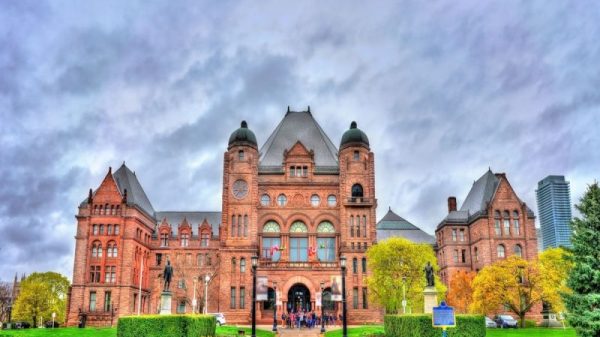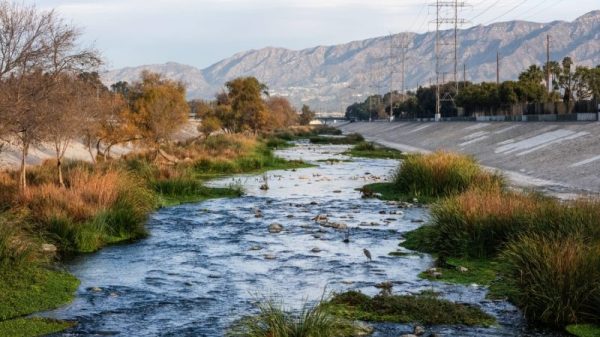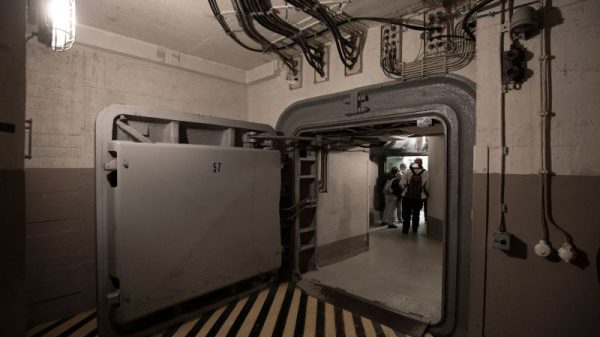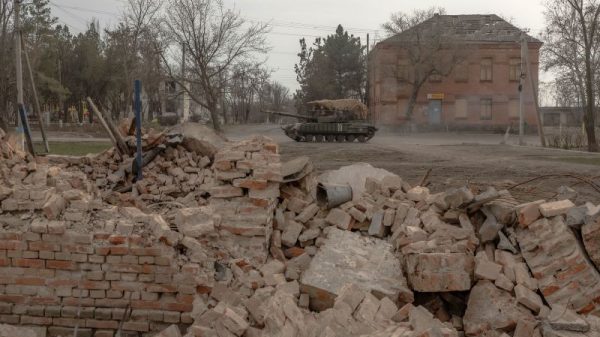Hundreds of thousands of Palestinians who have been displaced multiple times from Israeli airstrikes across the Gaza Strip are now facing another threat – the arrival of harsh winter weather.
On Sunday, the first strong storm to hit Gaza this winter was felt in all parts of the enclave.
In a makeshift displacement camp near the sea in Deir al-Balah, central Gaza, thousands of families battled high tides, heavy winds and rainfall that damaged their nylon and plastic tents.
“It’s pointless!” one man shouted.
“We came here because the sea was our only protection. And now the sea is attacking us,” another said.
The wooden poles holding up the tents, barely anchored to the ground, shook with every gust of wind. Families shuffled around them in distress, worried they’d collapse.
The head of the United Nations Relief and Works Agency for Palestine Refugees (UNRWA) warned Tuesday in a post on X that as winter comes, people in Gaza “need everything, but very little comes in.”
“Winter in Gaza means people will not only die because of air strikes, diseases or hunger. Winter in Gaza means more people will die shivering because of the cold, especially among the most vulnerable including older people + children,” Philippe Lazzarini said.
In October, the amount of aid entering Gaza hit the lowest level since Israel’s war in the enclave started, according to data compiled by the UN.
The average temperature in Gaza falls to between 10°C and 20°C (50F to 68F) in December, dipping a couple of degrees lower on average in January. The rainy season typically lasts from November to February, with January the wettest month.
The water that flooded into some tents in Deir al-Balah soaked everything inside, leaving blankets and carpets a tangled, dusty mess. Large plastic sheets which served as the floor sunk into the wet sand, leaving nothing between those sheltering inside and the bare ground.
“What will keep us warm tonight?” Mohammad Younis asked, as he picked up his wet clothes.
“We’re like beggars in front of the world, and nobody cares about us. I don’t know where I’ll sleep. I’ll end up sleeping in the sea,” he cried.
The tarpaulin serving as a roof on Younis’ tent is now torn, allowing water in.
In another makeshift tent flooded by the raging sea, a displaced family of 10 sat shivering while the mother, Um Fadi, cooked over a fire. When they were displaced from Rafah months ago, she said, they were forced to shelter on the beach because there was nowhere else to go.
“We’re trapped from all directions. From the sea, from the Israelis, from not having a home, from hunger,” she said.
Families ‘cold and at risk’
After a year of war following Hamas’ October 7 attacks on Israel, at least 1.9 million people – or about 90% of the population across the Gaza Strip – are internally displaced, according to the UN. Many have been displaced repeatedly, some 10 times or more, it added.
The Norwegian Refugee Council said in a recent report that Israel’s continued offensive has given Palestinians fewer options for shelter this year compared to last.
“This winter, as fewer buildings remain standing, many Palestinians are forced to live in tents and makeshift shelters that provide considerably less protection against cold wind and rain,” the report said.
As of September 2024, more than 200,000 housing units in Gaza had been destroyed and severely damaged, according to the UN Office for the Coordination of Humanitarian Affairs, which added that nearly 1 million people are in need of “winterization support.”
Tens of thousands of displaced Palestinians have sought shelter in Al-Mawasi in southern Gaza, designated a “humanitarian zone” by the Israel Defense Forces (IDF). Many are living in tents in an area with limited infrastructure or access to humanitarian aid.
In recent months, the coastal camp has been hit repeatedly by Israeli strikes, attacks the IDF says are targeting Hamas.
The tents are dilapidated after heavy rain and brutal winds.
As Sunday’s storm whipped through, people’s belongings were strewn along the beach, some having been swallowed up by the sea.
Most of the tents and makeshift shelters they rely on have been used for months and need replacement to withstand harsh winter conditions, he said.
“It is beyond imagination, knowing that they can barely survive regular weather with whatever they have… A lack of proper clothing, blankets and safe heating methods mean families will remain cold and at risk for many months,” he added. It’s a fear that haunts Um Fadi in Deir al-Balah every day.
“Tonight, we’re threatened by great danger. At any moment, the sea might engulf us. We don’t know what we will do,” she said.
Rain-soaked tents
In northern Gaza, the Israeli military is carrying out a widespread operation that has entered its second month. The bombardment has displaced up to 130,000 Palestinians since October 6, according to the United Nations Population Fund (UNFPA), and the need for aid is acute.
Many have sought shelter in Yarmouk sports stadium in Gaza City, where decrepit tents made of white cloth turned brown on Sunday following an evening of heavy rain.
As in the seafront shelter, young children stood barefoot on the wet asphalt or waded through puddles, wearing barely enough to keep them warm, while their parents tried to repair the damaged tents.
Sami Salehi said he had fled “suffering, airstrikes, attacks and death” in the north, seeking shelter in Gaza City.
“This tent is made of cloth, so when water comes in, it goes everywhere. And we’re in a low-lying area, so even if the roof protects us, water will come from below,” he said.
After suffering an injury in an Israeli airstrike, Salehi said he thought he’d die, but was surprised to see that God had saved his life.
“I wish I died instead. Death is more honorable than this life.”







































